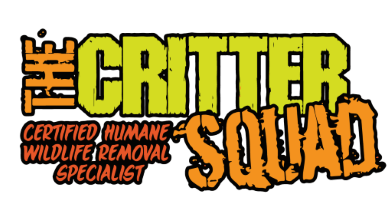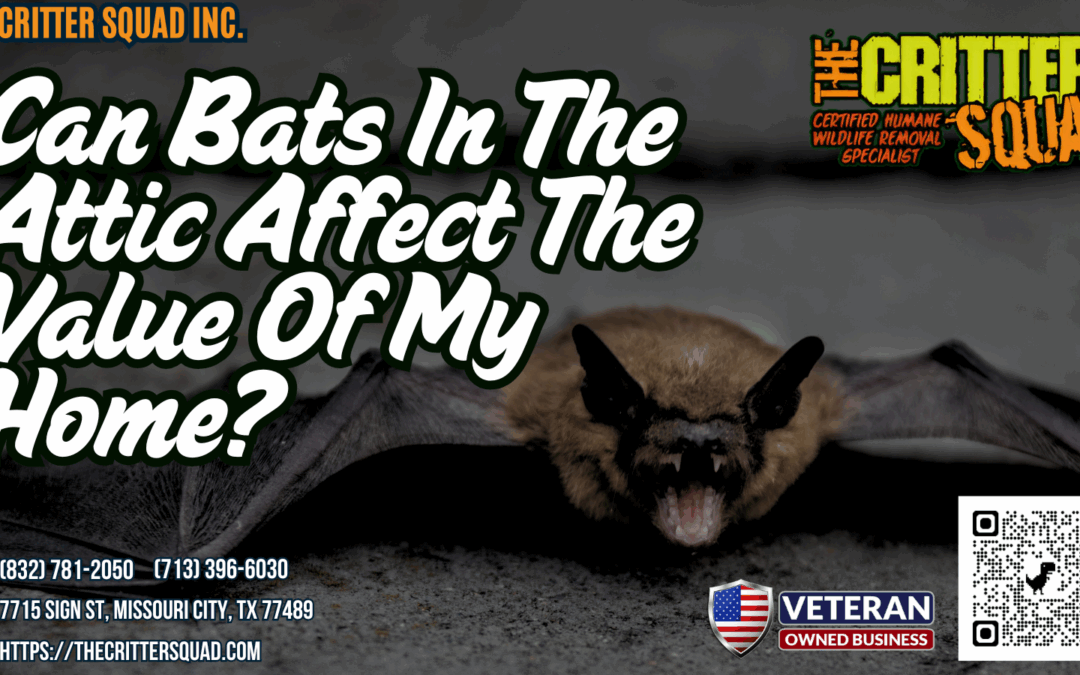Bats in the attic can considerably affect a home’s value. Structural damage from bat droppings and nesting can lead to costly repairs. Health risks, including rabies and histoplasmosis, heighten concerns for potential buyers. Furthermore, a bat infestation may complicate home inspections and appraisals, further decreasing marketability. Buyers often perceive properties with bats as neglected, which can deter offers. Understanding the implications of bat presence is essential for homeowners seeking to protect their investments and overall property appeal.
Key Article Highlights
- Bat infestations can lead to structural damage, decreasing property value due to necessary repairs and remediation costs.
- Health risks associated with bats, such as rabies and histoplasmosis, can deter potential buyers and affect marketability.
- Complications during home inspections caused by bat presence may lead to appraisal challenges and reduced buyer confidence.
- Properties with known bat issues may be perceived as neglected, impacting desirability and emotional investment from buyers.
- Effective bat remediation and prevention strategies are essential to maintain and protect overall property value.
Understanding the Role of Bats in the Ecosystem
Bats play an essential role in maintaining ecological balance, serving as both pollinators and natural pest controllers. Their dietary habits primarily consist of insects, including agricultural pests, which considerably reduces the need for chemical pesticides. This natural pest control promotes healthier ecosystems and supports sustainable agriculture. Additionally, certain bat species are critical for the pollination of various plants, contributing to biodiversity and the overall health of ecosystems. As bat populations decline due to habitat loss and other threats, the importance of bat conservation becomes increasingly evident. Many species of bats can consume up to 1,000 insects in a single night, highlighting their effectiveness as natural pest controllers. Protecting these species is essential not only for ecosystem balance but also for the agricultural economy. Understanding their role highlights the interconnectedness of species, emphasizing the need for informed conservation efforts to safeguard ecological integrity. Furthermore, humane bat removal and control methods ensure that bats in attic removal can be conducted without harming these vital creatures.
Common Structural Damages Caused by Bats
Homeowners may encounter various structural damages resulting from bat infestations, which can lead to significant repair costs and decreased property value. The presence of bats can compromise the structural integrity of a home through several means:
- Insulation Damage: Bats may nest in insulation, leading to degradation and reduced effectiveness, which increases heating and cooling costs.
- Roof Damage: Their droppings can deteriorate roofing materials, causing leaks and further structural issues.
- Wood Rot: Moisture from bat waste can promote wood rot, weakening beams and supporting structures.
Addressing these damages promptly is essential to maintain property value and guarantee a safe living environment. Homeowners should consider professional remediation to effectively resolve these issues while safeguarding their investment.
Health Risks Associated With Bat Infestations
Bat infestations pose significant health risks, primarily through the transmission of diseases such as rabies and histoplasmosis. Additionally, individuals may experience allergic reactions to bat droppings, which can exacerbate respiratory issues. Understanding these health implications is essential for homeowners facing potential infestations.
Disease Transmission Risks
The presence of bats in residential spaces poses significant health risks, primarily through the transmission of various diseases. Bats are known carriers of several pathogens that can lead to zoonotic transmission, affecting both human and animal health. Understanding these risks is essential for homeowners.
- Rabies: A viral disease transmitted through bites or scratches, rabies is fatal if untreated and poses a major concern with bat encounters.
- Histoplasmosis: This fungal infection can arise from inhaling spores found in bat droppings, leading to respiratory issues.
- Lyssavirus: Similar to rabies, this virus can cause severe neurological symptoms and is associated with specific bat species.
Recognizing these potential bat diseases is crucial for maintaining health and addressing property concerns effectively.
Allergic Reactions Potential
Allergies associated with bat infestations can present crucial health challenges for individuals exposed to these animals or their droppings. Bat guano, when disturbed, can release spores and allergens into the air, potentially triggering allergy symptoms such as sneezing, itching, and rashes. Additionally, prolonged exposure may lead to respiratory issues, including asthma exacerbations and chronic bronchitis. The proteins found in bat droppings can cause hypersensitivity reactions in susceptible individuals, underscoring the importance of addressing infestations promptly. It is essential for homeowners to recognize these health risks, as they not only affect personal well-being but can also influence the home’s market value. Mitigating bat presence through professional removal services can greatly enhance both health outcomes and property desirability.
The Cost of Bat Remediation and Exclusion
Addressing the presence of bats in residential spaces often necessitates a thorough and potentially costly remediation and exclusion process. Homeowners must consider various factors that influence overall expenses, including:
- Inspection Costs: A professional assessment is essential to identify the extent of the infestation and determine the appropriate remediation techniques.
- Exclusion Methods: Implementing effective exclusion methods, such as sealing entry points and installing bat gates, can vary in price based on the home’s architecture.
- Ongoing Maintenance: Regular inspections and maintenance may be required post-remediation to prevent future infestations, adding to the long-term costs.
Investing in quality remediation and exclusion is vital, as it not only guarantees a bat-free environment but also protects the home’s value and the health of its occupants.
Impact on Home Inspections and Appraisals
The presence of bats in an attic poses significant challenges during home inspections, as inspectors must identify not only the infestation but also potential damage to the structure. This issue can lead to a decrease in the property’s appraised value, as prospective buyers may factor in the costs of remediation and repairs. Consequently, the financial implications of bat infestations extend beyond immediate removal, affecting overall marketability and valuation of the home.
Inspection Challenges
Home inspections and appraisals often face significant challenges when bats are discovered in attics. The presence of bats can hinder effective inspection techniques, leading to potential inspection limitations that compromise the thoroughness of the assessment. This situation necessitates specialized approaches to guarantee safety and accuracy.
- Access Restrictions: Bats may inhabit areas that are difficult to access, making visual inspections challenging.
- Health Hazards: The risk of disease transmission can limit inspectors’ willingness to conduct thorough examinations.
- Legal Considerations: Local wildlife regulations may prevent immediate removal, delaying inspections and affecting timelines.
These factors complicate the inspection process, potentially influencing the overall assessment and required remediation measures for any properties affected by bat infestations.
Appraisal Value Decrease
While the presence of bats in an attic can considerably complicate the inspection process, it can also lead to a notable decrease in a property’s appraisal value. Appraisers take various factors into account when determining property value, and the presence of wildlife, such as bats, raises significant appraisal considerations. Bats can lead to structural damage, health risks, and potential remediation costs, all of which may deter prospective buyers. Consequently, appraisers may adjust their evaluations downward to reflect the associated risks and necessary repairs. This reduction in appraisal value can impact the homeowner’s financial standing, making it essential for property owners to address bat infestations promptly to maintain their investment’s worth.
Remediation Costs Impact
Bats in an attic necessitate significant remediation efforts that can profoundly affect both home inspections and appraisals. The presence of bats introduces complexities that potential buyers and inspectors must consider, leading to variations in perceived value and repair costs. Key factors influencing remediation costs include:
- Remediation Timeline: The duration of the remediation process can impact marketability, with longer timelines potentially deterring buyers.
- Cost Variations: Costs can differ based on the extent of the infestation and the methods employed for removal and repair.
- Inspection Findings: Home inspectors may discover additional damage or health risks, further complicating the appraisal process and leading to reduced offers.
Understanding these elements is essential for homeowners aiming to maintain their property’s value.
Buyer Perceptions and Marketability Concerns
How do potential buyers perceive properties affected by bat infestations? Buyer concerns regarding homes with bat infestations often center on health risks, potential damage, and perceived neglect. These factors can considerably alter market perception, leading many buyers to view such properties as less desirable. The presence of bats may evoke fears of structural issues, pest-related complications, and the costs associated with remediation. Consequently, homes affected by bats may experience reduced marketability, resulting in longer selling times and lower offers. In addition, prospective buyers may hesitate to invest emotionally or financially in properties with known infestations, ultimately impacting the home’s overall value. Addressing these perceptions is essential for sellers aiming to maintain their property’s appeal in a competitive real estate market.
Steps to Address Bat Infestations Effectively
Addressing bat infestations requires a systematic approach to guarantee both effective removal and prevention of future occurrences. A well-structured plan can minimize disruption while making certain that the home remains bat-free.
- Assessment and Inspection: Conduct a thorough inspection to identify entry points and bat colonies. Understanding the extent of the infestation is essential for effective bat removal.
- Humane Removal: Engage professional wildlife removal services that specialize in humane techniques. This assures the bats are relocated safely without harming them.
- Prevention Strategies: After removal, seal entry points and implement preventative measures such as installing bat houses or using deterrents. Regular maintenance checks can further reduce the likelihood of re-infestation.
These steps not only protect the home but also enhance its marketability.
Frequently Asked Questions
Can I Legally Remove Bats From My Attic?
The legality of bat removal varies by region, necessitating an understanding of local legal regulations. Individuals must consult wildlife authorities to guarantee compliance with laws protecting bats, which may require professional bat removal services.
How Can I Prevent Bats From Returning After Removal?
To prevent bats from returning after removal, one must juxtapose exclusion techniques with habitat modification. Sealing entry points and altering the environment can effectively deter future infestations, ensuring a safer living space for all inhabitants.
What Signs Indicate a Bat Infestation in My Attic?
Signs of a bat infestation include the presence of bat droppings, which resemble small pellets, and noticeable noise disturbances, such as scratching or squeaking sounds at night, indicating activity within the attic space.
Do Different Bat Species Affect Home Value Differently?
While one might assume all bat species impact home value equally, differences in species can influence home appraisals. For instance, some species are protected, potentially complicating removal and affecting overall property desirability and marketability.
Will My Homeowner’s Insurance Cover Bat-Related Damages?
Homeowner’s insurance policies vary considerably regarding coverage for bat damage. Typically, insurance claims may address structural issues caused by bats, but exclusions often apply. Homeowners should review their policies and consult agents for clarity on specific coverage details.

